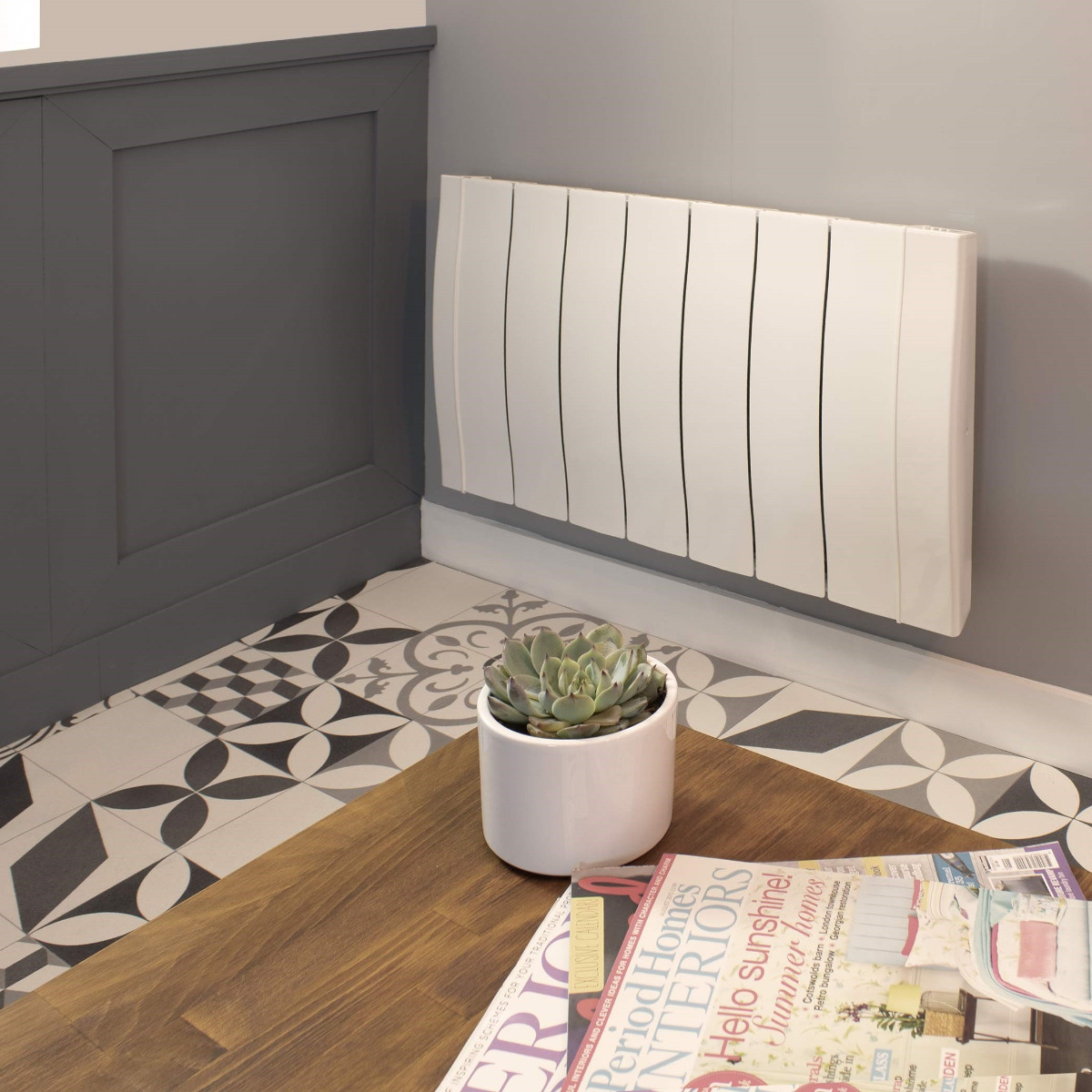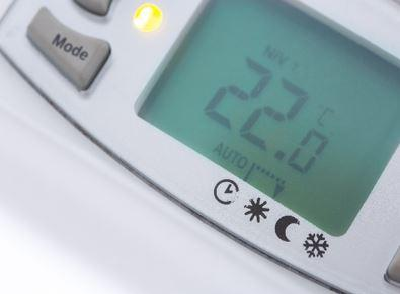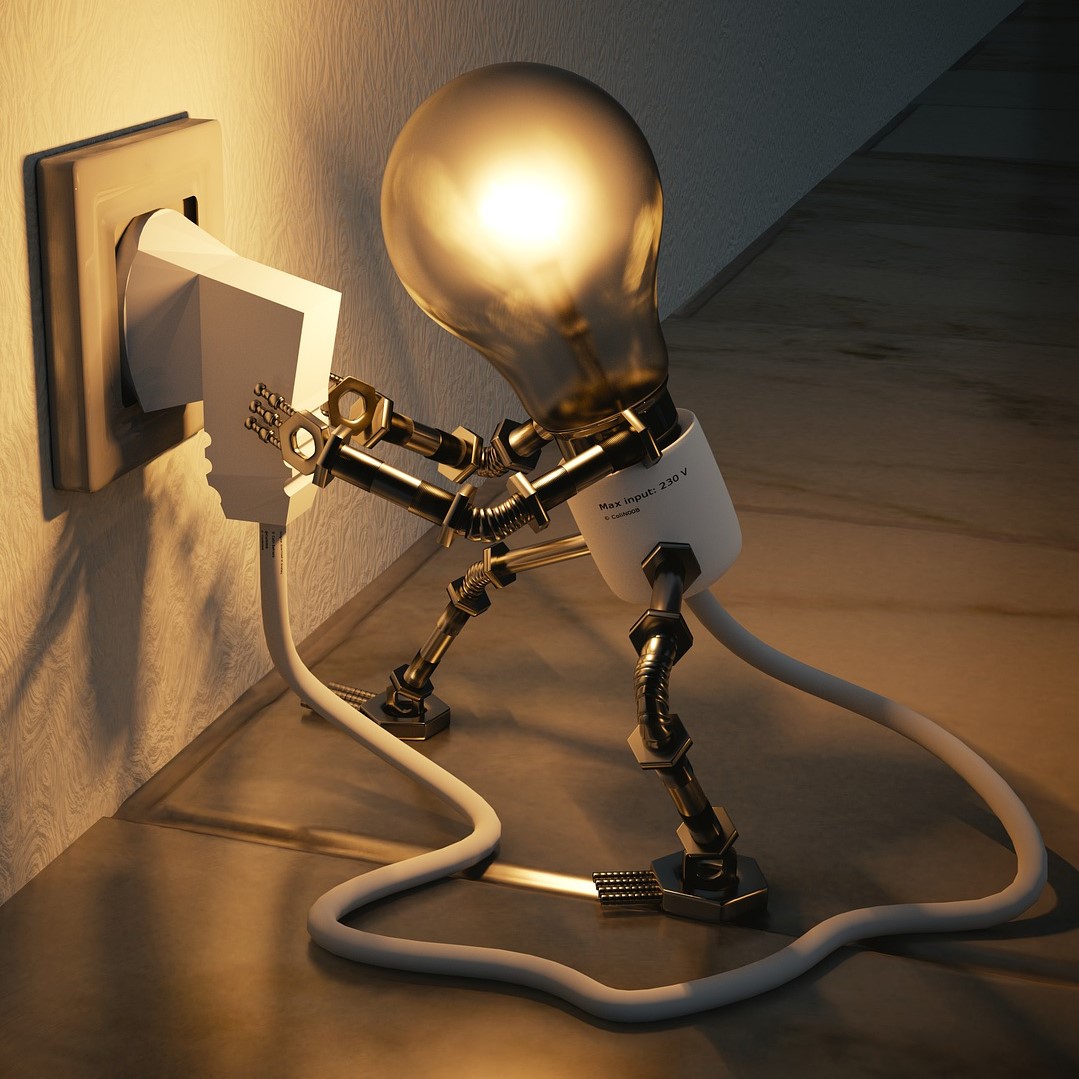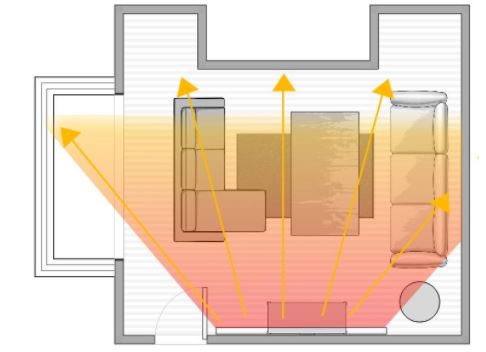Nothing kills Christmas like pondering the extent of your excesses. The price of all that food, drink, and tinsel (not to mention the presents) can push your finances over the edge when you start factoring in bills too. Around this time of year, the lingering cold forces us to rely on our heating more than ever – providing festive, yet costly, warmth. While nobody wants to be nicknamed Ebenezer this Christmas, there’s nothing wrong with wanting to keep your heating bills low. Energy suppliers will tell you to turn your thermostat down, relatives will say put a jumper on – at Electric Radiators Direct, we’ve decided it’s time for some solid, practical advice. Follow our ten steps for economical heating and start saving today…
 1) Ditch any storage heaters you can find
1) Ditch any storage heaters you can find
Storage heaters have managed to survive for far too long. Used by a surprising number of homes across the UK, these boxy 1950s relics fail to provide what’s expected of modern electric heating. Storage heaters use continuous power throughout the night in an attempt to keep the house warm throughout the day, afternoon, and (supposedly) the evening. Prone to running out of heat early, lacking control, and incurring costly charges when drawing power in the day – for economical home heating, storage heaters are more of a hindrance than an asset.
2) Consider a better energy tariff
The flip-side to using storage heaters with a cheaper night-time energy tariff, such as Economy 7, is the extortionate daytime energy rate. On average, a typical Economy 7 rate charges 7p/kWh for night-time electricity. For use in the day, the rate increases to 15p/kWh – which is more than double! Boiling kettles, charging phones, and even turning the lights on can result in costly bills that counteract the benefits of the cheaper night-time rate. If you use storage heaters, now might be the time to bite the bullet and consider making the switch.
 3) Choose some electric radiators
3) Choose some electric radiators
Electric radiators have burgeoned in recent years – infiltrating the mainstream and surprising non-believers with their versatile and efficient designs. Equipped with digital programmers and highly accurate digital thermostats, modern electric radiators operate to exact temperatures at exact times, minimising waste and ultimately saving you money. They come with varying levels of control – some offering open-window detection, motion sensors, and energy consumption monitors. All of which help to keep your monthly costs low and your home nice and warm.
4) Opt for DIY installation
Whether you have plumbed central heating radiators or hardwired storage heaters, relocating them can be a pain. Costly call outs, potential damage to your interiors, and continually mounting costs aren’t ideal when installing or removing radiators. Most electric radiators, however, are suitable for DIY installation – fixing to walls in a matter of minutes. Simply find a suitable location near a plug socket, drill some holes, and mount the radiator to the wall like a TV – using basic tools and minimal DIY skill. Simple, quick, and painless – DIY installation is a great way to save money on your heating from the get-go.
 5) Get programming
5) Get programming
Electric heating is at its best when it’s running in tandem with a heating schedule. Programming your electric radiators allows you to set exact temperatures and specify exact heating times – alleviating any reckless or wasteful heating. Most electric radiators come with advanced controls, letting you create a 24/7 weekly schedule that’s fully customisable – allowing for different schedules, routines, and lifestyles. Spending the initial time to create a detailed heating program will ensure your electric radiators run as economically as possible, slimming down your monthly energy bill.
6) Choose a smart radiator
Smart radiators are the pinnacle of electric radiator design. Equipped with a motion sensor, these radiators detect when you’re at home and when you’re not – creating a flexible heating schedule based on movement. Removing all the hassle of programming, once set up, smart radiators pretty much run themselves with minimal input. The most economical feature of smart radiators is their ability to turn themselves on or off depending on movement. If you pop out one afternoon, your smart radiators will notice and stop heating – reducing wasted energy and ultimately reducing your heating bill!
7) Match the right heater to the right room
Matching a correctly sized radiator to a correctly sized room is an easy way to ensure your monthly bills are as low as possible. Poor heater placement can skyrocket the cost of your heating, so it’s important to make sure you’re not underspecifying the size of your heater for your room. Underspecifying (choosing a heater with too low a wattage to heat a large room) will force the heater to work at full-pelt for the entire time it’s on – which will be reflected in your monthly bill. For economical heating, choose an appropriately sized heater for each of your rooms. It’s always better to over-specify, rather than underspecify. This way, your electric heaters won’t have to work as hard to heat the room, reducing energy consumption and cost.
8) Zone your heating
Allocating your electric heaters to specific zones is a great way to improve overall efficiency and ensure your monthly bills don’t suffer. Heater zoning allows you to control your electric radiators in groups – rather than having to control them all together. If you want to increase the kitchen temperature, you can do just that without having to increase the temperature throughout the whole house. This ultimately keeps your energy consumption down and minimises waste. To keep a comprehensive overview of your heating, and therefore your heating bill, heater zoning is the way forward.
 9) Generate your own electricity
9) Generate your own electricity
A seemingly drastic option, renewable energy is becoming more and more accessible every year – becoming less of a specialist pastime and more of a general consideration. While we’re not expecting everyone to abandon their lives and start digging foundations for a 12m wind turbine, renewable energy would be a concrete way to avoid expensive energy bills. Solar panels are the most popular domestic choice, with the potential to generate in excess of 4000W a day – ample power for the average home. After the initial costs of purchasing solar panels, you might even find yourself in the position to sell your excess energy back to the grid – sending them an energy bill rather than the other way around!
10 Shop at Electric Radiators Direct
Electric Radiators Direct have an extensive and eco-efficient product range. From subtle infrared heating panels to super-efficient smart radiators like the Haverland SmartWave, we have a multitude of electric heaters that offer intelligent, energy-conscious home heating. If you’re committed to keeping your heating costs down, we have a variety of electric heaters that can help you do it!
So, there you have it. A ten-point checklist for beating the monthly bills and improving your energy efficiency. If you’re tired of opening your winter energy bills and shrieking in despair, now’s the time to do something about it – before spring comes back around and the problem is postponed until next year…
Image sources
Skip
Photo by NeONBRAND on Unsplash
Energy image
https://images6.moneysavingexpert.com/images/img-full-v-savings-energy.jpg
Drill, credit Taduuda
https://unsplash.com/photos/Geh-r9A4RBg
Thermostat
https://www.cloverleafcomm.com/thermostat-installation
Heater zoning image, credit Radeco.ie
https://modernize.com/home-ideas/12694/pros-cons-multi-zone-heating-cooling
Generate electricity
https://pixabay.com/photos/light-bulb-idea-creativity-socket-3104355/






